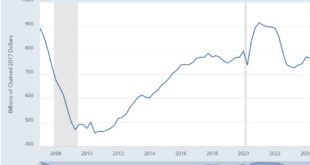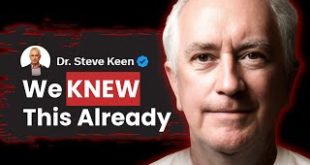On credibility and causality in economics ‘Ideally controlled experiments’ tell us with certainty what causes what effects — but only given the right closures. Making appropriate extrapolations from (ideal, accidental, natural or quasi) experiments to different settings, populations or target systems, is not easy. ‘It works there’ is no evidence for ‘it will work here.’ Causes deduced in an experimental setting still have to show that they come with a...
Read More »Blog Archives
Housing Shortage, Housing Bubble, Soft Landing, FED Brilliance or Lick?
I think the title makes it clear that this will be a rambling confused post. I am typing on with the thought that something is better than nothing and no one has to read this. The first topic – house prices, is in fact one that interests me a lot. I have a regression which suggests that a high ratio of house prices to the general price level is terrible news, because it indicates a housing bubble which will burst and be followed by a prolonged...
Read More »The 2017 Tax Cut and Jobs Act
by Bill Gale EconoFact The 2017 Tax Cut and Jobs Act (TCJA) was the most sweeping realignment of the U.S. tax code in over three decades. It lowered tax rates, simplified taxes, raised the government debt, and was regressive, benefitting people who are well off more than the middle-class and the poor. Many provisions of the TCJA expire in 2025 unless action is preserves them. What would the expiration, or the continuation, of these...
Read More »What is heterodox economics?
from Lars Syll Based on our interviews, heterodox economics appears to be a positive project, inevitably defined somewhat in terms of the mainstream but not exhaustively so. It is also efficacious, with policy and real-world impact. It is a complex object, not amenable to definition by a single criterion. Its dimensions are partly intellectual, in terms of what it believes. It holds a realist position. It is concerned with asymmetric power relations, in the economy and in the economics...
Read More »Turning a corner on Medicare Advantage?
As I posted yesterday, Medicare Advantage, which now covers more than half of the Medicare-eligible population, is a rip-off for taxpayers and for policy holders. Apparently, this is finally sinking in for hospitals and health systems across the country:“In 2023, Becker’s began reporting on hospitals and health systems nationwide that dropped some or all of their Medicare Advantage contracts.“Data on this topic is limited. In January, the Healthcare...
Read More »It’s time to make our tax code more equitable
An excellent take on taxing the Black poor and the poor in general. It and its attachments are a good read which is why it is here. Taken from an advertisement. Tell the House and Senate: It’s time to make our tax code more equitable. The racial wealth gap has become wider during the past couple of decades. Significant economic events such as the Great Recession and the COVID-19 pandemic have drastically shifted wealth towards the well-off....
Read More »Finally . . . the FTC Sues PBMs for Jacking Up Insulin Prices
Previouly . . . As Dr. Perry Wilson explains; “Different chronic diseases have different patterns of price increases. The biggest increase was seen in diabetes care (1993 – 2013) and driven largely by the rising prices of pharmaceuticals” of which the cost of manufacturing did not increase. Now Secretary of HHS, Alex Azar as the CEO of Eli Lilly raised the price of the century old drug Humalog used to treat diabetes by 345% taking it from...
Read More »Relevance without the noise
by Merrill Goozner GoozNews The 2022 Washburn fire nearly reached Grizzly Giant, the giant sequoia thought to be somewhere between 2000 and 3000 years old. Only the heroic efforts of park rangers and firefighters saved the tree: But the fire’s aftermath could be seen throughout the southern portion of the park. Started by man, exacerbated by misguided fire suppression strategies (now abandoned), and fueled by a ten-year drought...
Read More »Eating cats and dogs
Eating cats and dogs .[embedded content]
Read More »The Limits to Growth
System Dynamics was first developed in the 1950s by Jay W. Forrester at MIT. Initially, it was used to study industrial processes. Forrester's big idea was to use feedback loops and time delays to understand how different parts of a system interact with one another. He published the groundbreaking book Industrial Dynamics in 1961, which laid the foundation for this field. In the 1970s, System Dynamics gained wider attention with the release of the famous book The Limits to Growth, created...
Read More » Heterodox
Heterodox





